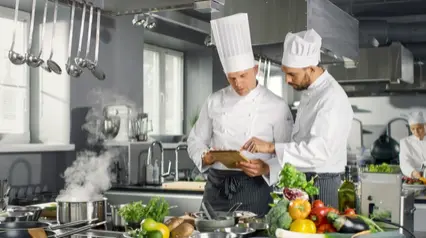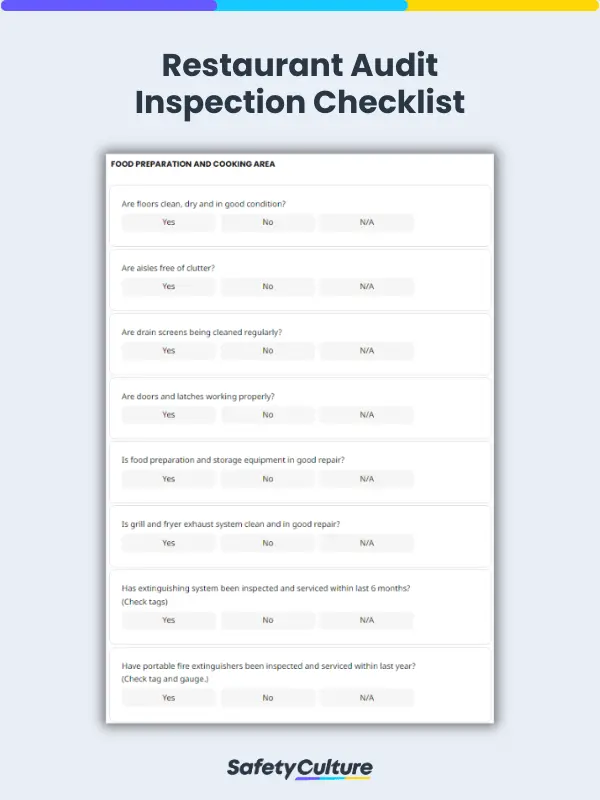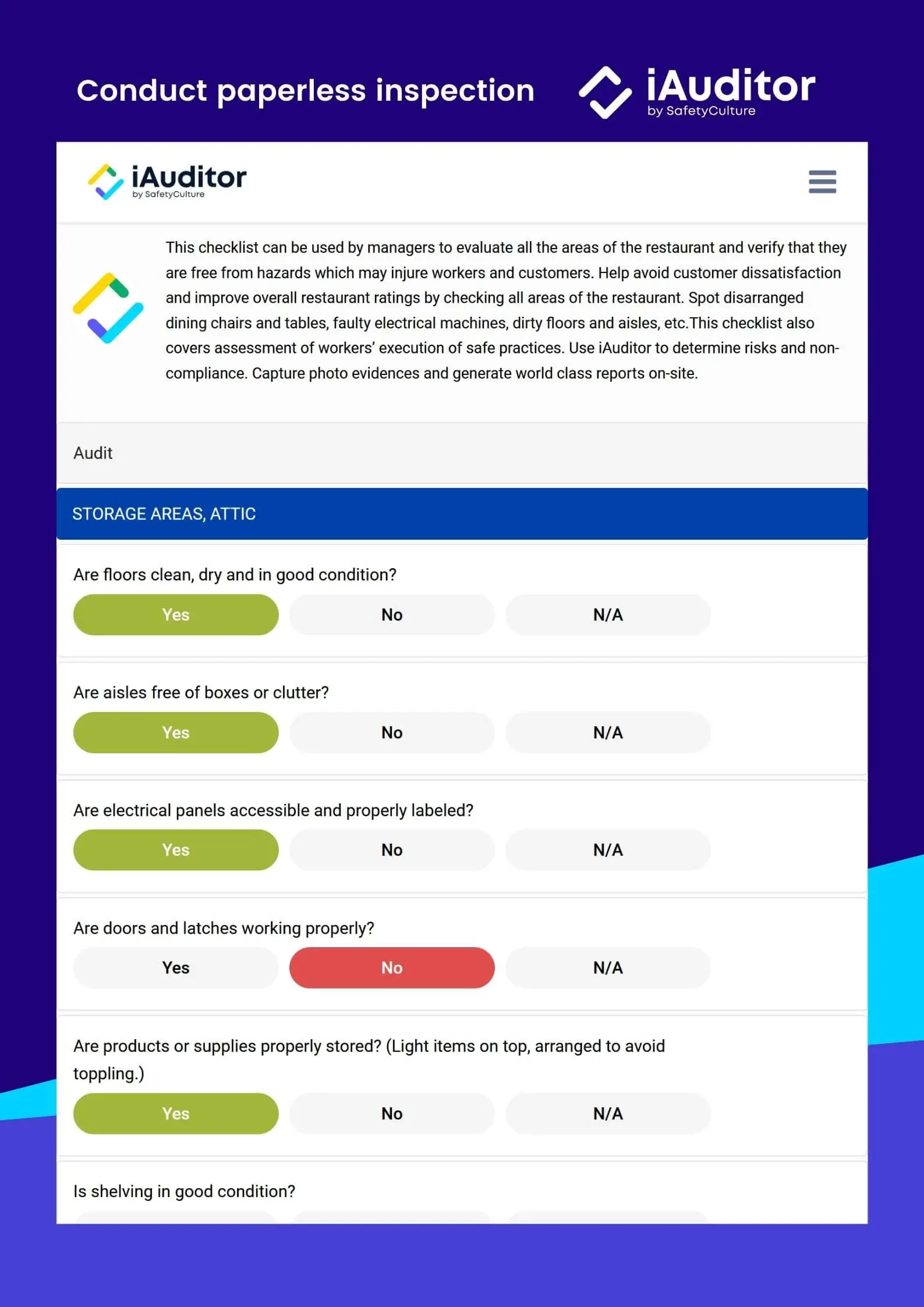What is a Restaurant Audit?
A restaurant audit refers to the formal evaluation of a restaurant’s facilities, procedures, and practices to ensure that they comply with organizational, regulatory, and industry standards for food safety, hygiene, housekeeping, and maintenance. Restaurant audits can be internal, performed by the restaurant manager, a supervisor, or other staff members, or external, performed by a licensed health inspector.
What is a Restaurant Audit Checklist?
Restaurant audit checklists are used by designated restaurant inspectors to assess if establishments are aligned with the set standards for food safety and hygiene, including housekeeping and facility maintenance. Business owners, auditors, and quality assurance teams use restaurant audit templates to evaluate performance, identify issues, and assign actions to address them.
Internal Restaurant Audits: Top Benefits of Diligent Self-Inspection
Health inspector visits, whether scheduled or unannounced, are dreaded by restaurant owners for good reason. Being caught with health code violations translate to hefty fines, or worse, a shutdown of the entire establishment. Restaurant owners and managers can reduce the stress of external restaurant audits by implementing an effective internal auditing program to ensure compliance with relevant food safety standards.
Here are the top benefits of implementing a good self-inspection program:
Food Risk Awareness
Running an effective internal auditing program allows you to spot instances and sources of non-compliance so you can proactively correct them before the health inspector forces you to. Prioritize the safety of your customers by verifying if the best practices for food hygiene and preparation are being followed consistently.
Check if frozen foods are kept at the recommended temperature to avoid spoilage. Observe kitchen staff and ensure that they wash their hands thoroughly before preparing food, check if kitchen utensils are being cleaned before usage, and ensure that hot food is kept at or above 140° F among other things.
Knowing the common markdowns issued by health inspectors and making a conscious effort to prevent them substantially lowers the risk of non-compliance.
Process Optimization
Through internal restaurant audits, you can not only see if existing SOPs are being followed, you can also identify gaps in your process so they can be eradicated. This includes the discontinuation of redundant and impractical steps, replacement of equipment and utensils deemed ineffective by kitchen staff, and changes on the wait staff’s service process.
Audit-Proofing
Running an effective internal audit process is the best way to ensure that you don’t incur health code violations during surprise and scheduled external audits. Proper documentation during your internal audits is also important since they can serve as evidence should the health inspector ask for clarification regarding your restaurant practices.




